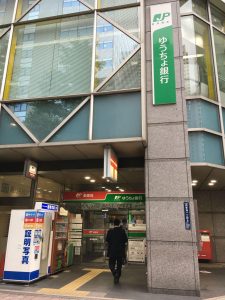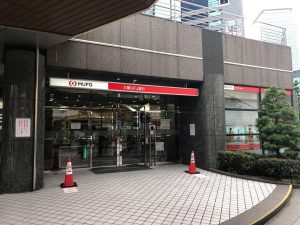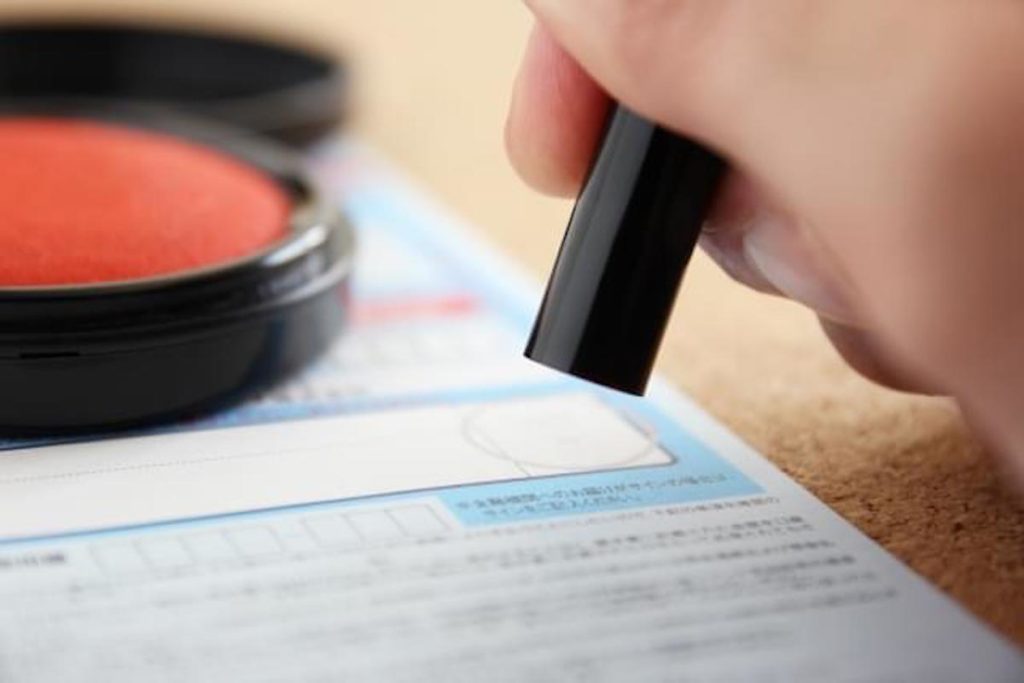You might be struggling if you are trying to open a bank account in Japan. There are many banks that you could potentially sign up with, all with different services.
You might also be looking for somewhere with English support, but unfortunately, the process of opening a bank account is still difficult for international residents who do not speak the language. The number of banks that offer English support is growing, but still small.
In this article, we will go over the process to opening a bank account in Japan.
The fees and other information provided in this article are subject to change at any time. We strive to keep the information as up-to-date as possible, but we cannot guarantee that it is the most recent information. If you want to get the latest information, please contact the bank you are interested in.
Table of contents
- 6 Points to consider when looking for a bank
- The bank you should choose
- The different types of cards when opening an account
- Bank related Japanese words
6 Points to consider when looking for a bank
First we will introduce 6 important points to consider when opening a bank account in Japan.
1. Difficulty opening an account
Unfortunately, there are only a few banks that offer support in English. For example, the application documents may only be in Japanese, or the smartphone application to manage your bank account may also be available only in Japanese.
Some banks will not allow you to open an account if you do not speak Japanese. Language support is an important point to consider when choosing a bank.
2. The number of ATMs and bank branches
Using the ATM, you can transfer money, check your account balance, and more. Nowadays, many banks offer a smartphone application or online banking service that can provide these services. The ATM is still used to withdraw money. Many shops still accept only cash, so the number of ATMs in your area is something to consider.
3. Online banking or regular banking
Some banks offer services only online and have not physical branches. Compared to standard banks with physical branches, there are advantages such as lower fees, higher savings interest rates, and more. However, online banks do not have branches, so customer support is limited to telephone and e-mails.
Bank accounts are essential for everyday living. In case there is an emergency, there is a higher chance that you can solve the problem by talking to a bank teller. Therefore, if you are new to living in Japan, it recommended that you avoid online-only banks.
4. Bank account fees (transaction fees, withdrawal fees, etc.)
In most cases, there are no account maintenance fees for Japanese banks. Therefore, the fees you should be concerned about include withdrawing money from the ATM, money transfer fees, and fees for foreign remittance.
However, these fees do not differ very much between banks. For example, there is at most ¥100 difference per transaction for transferring money. If you plan to make more than 50 transfers a month, this might be a concern, but most people do not need to worry about this.
5. Does your company require certain banks?
When you open a bank account to receive your company’s or part-time job’s salary, your company may require a bank account at a specific bank. Therefore, it is recommended that you check with the company in advance if this is the case.
In many cases, the specified bank is a large bank, and it should not be a problem to use this as your regular bank. However, if you have issues such as communication issues (ex. no English support), you should consult this with your company.
6. Are online banks and apps available in English?
Most banks in Japan offer online banking or a dedicated smartphone app that allows you to check your account balance, deposit and withdrawal details, transfer money, and send money overseas. However, in many cases, online banking and apps are only available in Japanese.
Using these in Japanese daily to manage your bank account is troublesome. If possible, try to choose a bank whose online banking and app support English. If they only support Japanese, then it would be best to learn specialized Japanese terms for banks. I have put together some of the most commonly used words at the end of this article, so if you are interested, take a look!
↑ Go back to the table of contents
The bank you should choose
Did these points make sense to you? Then, I would like to introduce three recommended banks by features.
Easiest for foreigners to open an account – Japan Post Bank

Most banks do not let you open a new account within six months of arrival to Japan. However, this does not apply to Japan Post Bank. Support at the teller window is usually only in Japanese, but if you go with a friend who can speak Japanese, you may be able to open an account.
Japan Post is the most popular bank among foreigners in Japan. Also, Japan Post Bank has the largest number of branches, with approximately 24,000 branches throughout Japan. If you have a Japan Post Bank account, you can live anywhere in Japan without having to worry about access to the bank.
Japan Post Bank has the most substantial deposit balance among Japanese banks, and the government indirectly holds a portion of Japan Post Bank’s stock, which makes the bank highly reliable and stable. If you are wondering which bank to open an account at, consider opening an account at Japan Post Bank.
Japan Post Bank Information
Scroll right for more →→
| Official website URL | https://www.jp-bank.japanpost.jp/ |
| English support | Bank Teller Support: Japanese Telephone Support: Japanese Online Banking: Japanese Documents for creating an account: English documents are available online |
| Open an account online | Not possible. You will have to go to a bank branch. |
| Personal seal requirement | Personal seal is not necessary. Signature is accepted. |
| Required ID to open an account | Residence Card + Student ID, Employee ID |
| Days it takes to open an account | Day of applying ~ 2 weeks |
| Account can be opened within 6 months of arriving in Japan | Possible |
| Foreign remittance fee | Online banking: 3,000 JPY per transaction Bank teller: 7,500 JPY per transaction |
| Account maintenance fee | None |
For your reference, a document of information to foreign nationals applying to open an account by Japan Post Bank can be found here.
Peace of mind with perfect English support – SMBC Trust Bank PRESTIA

SMBC Trust Bank PRESTIA was originally Citibank Japan. In 2015, Sumitomo Mitsui Financial Group acquired Citibank Japan and changed its name to “SMBC Trust Bank PRESTIA.”
The main service of the bank is almost the same as that of prior Citibank Japan period and operates as a service closer to Western banks than Japanese banks. For example, passbooks are not issued, and they are focusing on customer support in English, withdraw local currency from ATMs in more than 200 countries and regions around the world, account fees, etc.
The branch offices are only located in major cities, with about 20-30 stores in Japan. However, banking can be done online, and customer support is available in English over the phone. As SMBC Trust Bank PRESTIA is affiliated with Seven-Eleven ATM and SMBC ATM, there is no inconvenience when withdrawing money.
If you are a student, you cannot open an account within six months of arriving in Japan, but if you are working and have a proper place of employment, it seems possible to open an account within six months.
SMBC Trust Bank PRESTIA Information
Scroll right for more →→
| Official Website URL | https://www.smbctb.co.jp/ |
| English Support | Bank Teller Support: Japanese / English Telephone Support: Japanese / English Online Banking: Japanese / English Documents for creating an account: Japanese / English |
| Open an account online | Possible |
| Personal seal requirement | Personal seal is not necessary. Signature is accepted. |
| Required ID to open an account | Residence Card |
| Days it takes to open an account | Day of applying ~ 2 days |
| Account can be opened within 6 months of arriving in Japan | Possible if you are a company employee. Not possible if you are a student |
| Foreign remittance fee | Online banking: 3,500 JPY per transaction Bank teller: 7,000 JPY per transaction *There is some preferential treatment |
| Account maintenance fee | 2,000 JPY per month *There is some preferential treatment |
If you live in the Kanto region, you may want to consider – Bank of Mitsubishi UFJ

Mitsubishi UFJ Bank is one of the three largest megabanks in Japan. It is the second-largest bank after Japan Post Bank with as many as 750 branches available in Japan. With a number of them in the Kanto area, the bank is recommended for those who live in Kanto.
Unfortunately, it is pretty much not possible to open an account within six months of arriving in Japan. Also, although the bank’s website guides you to open an account online, foreigners cannot do so and must visit one of the bank’s branches.
The bank does not provide customer support in English and will refuse to allow you to open an account if you do not speak Japanese. Although it is difficult to open an account, Mitsubishi UFJ Bank is a reliable bank with many services available to its customers. If you speak some Japanese, this is a bank that you may consider creating an account with.
Mitsubishi UFJ Bank Information
Scroll right for more →→
| Official Website URL | https://www.bk.mufg.jp/ |
| English Support | Bank Teller Support: Japanese Telephone Support: Japanese Online Banking: Japanese Documents for creating an account: Japanese *If you cannot speak Japanese, it is not possible to open an account. |
| Open an account online | Not possible for foreigners, you need to go to a bank branch. |
| Personal seal requirement | Personal seal is necessary. |
| Required ID to open an account | Residence Card |
| Days it takes to open an account | Day of applying ~ 2 days |
| Account can be opened within 6 months of arriving in Japan | Not possible. |
| Foreign remittance fee | Online banking: 3,000 JPY per transaction Bank teller: 7,500 JPY per transaction |
| Account maintenance fee | None |
↑ Go back to the table of contents
The different types of cards when opening an account
Have you ever heard of a cash card? In Japan, it is a card that is issued when you open an account. There are other debit cards and credit cards that can be issued if you request one. Next, we will go over the difference between these cards.
Cash card
A cash card is a card that can be used to withdraw money (cash) from a bank account or deposit money into the account at the ATM. This card has no connection with Visa, Mastercard, etc. Therefore, it cannot be used to make payments.
Credit card
The credit card functions almost the same as in other countries and can be used for payment at stores and online shopping. It is only issued to individuals who successfully pass the application and screening processes. The amount that is charged to the credit card is generally billed together at the end of the following month.
Debit card
Like a credit card, a debit card can only be used for payment. However, the main differences from a credit card are:
- You can make a debit card without having to go through a screening process.
- When you shop and use the debit card, the amount spent is deducted immediately from the bank account, so the account balance is the amount of money you can spend with your debit card.
Please note that you cannot withdraw cash from ATMs with a debit card. You will need to use your cash card to withdraw some money.
↑ Go back to the table of contents
Bank related Japanese words
Lastly, here are some bank related Japanese words that may come in handy. Take a look and try to use them when opening a bank account in Japan!
Bank: 銀行 (Ginko)
Branch: 支店 (Shiten)
Savings Account: 普通預金口座 (Futsu Yokin Koza)
Checking Account: 当座預金口座 (Toza Yokin Koza)
Deposit: 入金 (Nyukin)
Withdrawal: 引き出し (Hikidashi)
Transfer: 振込み (Furikomi)
Direct Debit: 口座引き落とし (Koza Hikiotoshi)
Passbook: 通帳 (Tsucho)
Bank Account Number: 座番号 (Koza Bango)
Account Balance: 預金残高 (Yokin Zandaka)
Fee: 手数料 (Tesuryo)
Interest Rates: 金利 (Kinri)
Overseas Remittance: 海外送金 (Kaigai Sokin)
The exchange rate: 為替レート (Kawase Reito)

